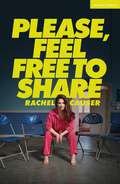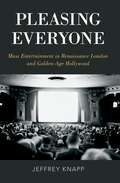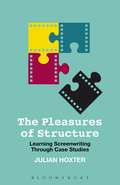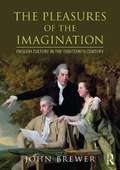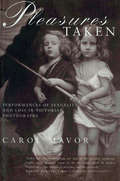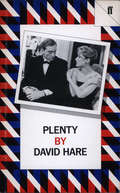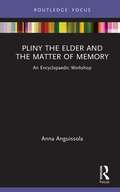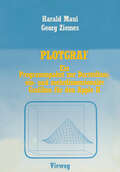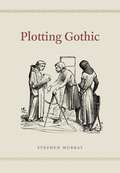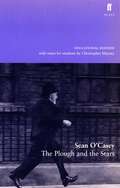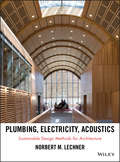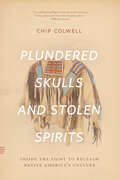- Table View
- List View
Please, Feel Free to Share (Modern Plays)
by Rachel Causer“Everyone is constructing themselves. I'm just conscious of doing it.More than that, I'm a sculptor of it.I am a fucking artist.”Alex is a social success. Her Instagram boasts a montage of members-only rooftops, inexplicably sunny days and clinking glasses – like after like after like! When her father dies, Alex reluctantly joins a bereavement group. She shares a little, and then lies... a lot. And it feels good – like the 'likes', but live, and just like that, Alex is hooked.Please, Feel Free to Share by Rachel Causer is a dynamic, darkly comic, one-woman show about our personal addictions, the never-ending pursuit of 'likes' and our growing desire to share all.Finalist: Popcorn Writing Award 2021Brought to you by Scatterjam, a female-led production company who are committed to creating innovative shows that actively challenge commonly held preconceptions and celebrate the comedic potential of doing so. They are the makers of the Offie-Nominated play When It Happens.
Pleasing Everyone: Mass Entertainment in Renaissance London and Golden-Age Hollywood
by Jeffrey KnappShakespeare's plays were immensely popular in their own day -- so why do we refuse to think of them as mass entertainment? In Pleasing Everyone, author Jeffrey Knapp opens our eyes to the uncanny resemblance between Renaissance drama and the incontrovertibly mass medium of Golden-Age Hollywood cinema. Through fascinating explorations of such famous plays as Hamlet, The Roaring Girl, and The Alchemist, and such celebrated films as Citizen Kane, The Jazz Singer, and City Lights, Knapp challenges some of our most basic assumptions about the relationship between art and mass audiences. Above all, Knapp encourages us to resist the prejudice that mass entertainment necessarily simplifies and cheapens whatever it touches. As Knapp shows, it was instead the ceaseless pressure to please everyone that helped generate the astonishing richness and complexity of Renaissance drama as well as of Hollywood film.
Pleasing Everyone: Mass Entertainment in Renaissance London and Golden-Age Hollywood
by Jeffrey KnappShakespeare's plays were immensely popular in their own day -- so why do we refuse to think of them as mass entertainment? In Pleasing Everyone, author Jeffrey Knapp opens our eyes to the uncanny resemblance between Renaissance drama and the incontrovertibly mass medium of Golden-Age Hollywood cinema. Through fascinating explorations of such famous plays as Hamlet, The Roaring Girl, and The Alchemist, and such celebrated films as Citizen Kane, The Jazz Singer, and City Lights, Knapp challenges some of our most basic assumptions about the relationship between art and mass audiences. Above all, Knapp encourages us to resist the prejudice that mass entertainment necessarily simplifies and cheapens whatever it touches. As Knapp shows, it was instead the ceaseless pressure to please everyone that helped generate the astonishing richness and complexity of Renaissance drama as well as of Hollywood film.
The Pleasures of Structure: Learning Screenwriting Through Case Studies
by Julian HoxterThe Pleasures of Structure starts from the premise that the ability to develop a well understood and articulated story structure is the most important skill a screenwriter can develop. For example, good structure requires a great premise and rigorous character development. Without clear character motivations and goals--which are themselves indicative of key structural beats--your story is going exactly nowhere. Using the simple and flexible 'W' model of screenplay structure developed in the prequel Write What You Don't Know, Hoxter sets this out as its starting point. This model is tested against a range of examples which are chosen to explore the flexibility not only of that model but of movie storytelling more generally. Writers and students often worry that they are asked to work 'to formula'. This book will test that formula to breaking point. For example, the first case study will offer the example of a well written, professional, mainstream movie against which our later and more adventurous examples can be compared. So the lessons we learn examining the animated family adventure movie How To Train Your Dragon lead us directly to ask questions of our second case study, the acclaimed Swedish vampire movie Låt den Rätte Komma In (Let The Right One In). Both movies have protagonists with the same basic problem, the same goal, and they use the same basic structure to tell their stories. Of course they are very different films and they work on their audiences in very different ways. Our linked case studies will expose how simple choices, like reversing the order of elements of the protagonist's transformational arc and shifting ownership of key story beats, has an enormous impact on how we respond to a structural model that is otherwise functionally identical.
The Pleasures of Structure: Learning Screenwriting Through Case Studies
by Julian HoxterThe Pleasures of Structure starts from the premise that the ability to develop a well understood and articulated story structure is the most important skill a screenwriter can develop. For example, good structure requires a great premise and rigorous character development. Without clear character motivations and goals--which are themselves indicative of key structural beats--your story is going exactly nowhere. Using the simple and flexible 'W' model of screenplay structure developed in the prequel Write What You Don't Know, Hoxter sets this out as its starting point. This model is tested against a range of examples which are chosen to explore the flexibility not only of that model but of movie storytelling more generally. Writers and students often worry that they are asked to work 'to formula'. This book will test that formula to breaking point. For example, the first case study will offer the example of a well written, professional, mainstream movie against which our later and more adventurous examples can be compared. So the lessons we learn examining the animated family adventure movie How To Train Your Dragon lead us directly to ask questions of our second case study, the acclaimed Swedish vampire movie Låt den Rätte Komma In (Let The Right One In). Both movies have protagonists with the same basic problem, the same goal, and they use the same basic structure to tell their stories. Of course they are very different films and they work on their audiences in very different ways. Our linked case studies will expose how simple choices, like reversing the order of elements of the protagonist's transformational arc and shifting ownership of key story beats, has an enormous impact on how we respond to a structural model that is otherwise functionally identical.
The Pleasures of the Imagination: English Culture in the Eighteenth Century
by John BrewerThe Pleasures of the Imagination examines the birth and development of English "high culture" in the eighteenth century. It charts the growth of a literary and artistic world fostered by publishers, theatrical and musical impresarios, picture dealers and auctioneers, and presented to th public in coffee-houses, concert halls, libraries, theatres and pleasure gardens. In 1660, there were few professional authors, musicians and painters, no public concert series, galleries, newspaper critics or reviews. By the dawn of the nineteenth century they were all aprt of the cultural life of the nation. John Brewer's enthralling book explains how this happened and recreates the world in which the great works of English eighteenth-century art were made. Its purpose is to show how literature, painting, music and the theatre were communicated to a public increasingly avid for them. It explores the alleys and garrets of Grub Street, rummages the shelves of bookshops and libraries, peers through printsellers' shop windows and into artists' studios, and slips behind the scenes at Drury Lane and Covent Garden. It takes us out of Gay and Boswell's London to visit the debating clubs, poetry circles, ballrooms, concert halls, music festivals, theatres and assemblies that made the culture of English provincial towns, and shows us how the national landscape became one of Britain's greatest cultural treasures. It reveals to us a picture of English artistic and literary life in the eighteenth century less familiar, but more suprising, more various and more convincing than any we have seen before.
Pleasures Taken: Performances of Sexuality and Loss in Victorian Photographs
by Carol MavorLewis Carroll's photographs of young girls, Julia Margaret Cameron's photographs of Madonnas and the photographs of Hannah Cullwick, "maid of all work", pictured in masquerade - Carol Mavor addresses the erotic possibilities of these images, exploring not ony the sexualities of the girls, maids and Madonnas, but the pleasures taken - by the viewer, the photographer, the model - in imagining these sexualities.
Pleasures Taken: Performances of Sexuality and Loss in Victorian Photographs
by Carol MavorLewis Carroll's photographs of young girls, Julia Margaret Cameron's photographs of Madonnas and the photographs of Hannah Cullwick, "maid of all work", pictured in masquerade - Carol Mavor addresses the erotic possibilities of these images, exploring not ony the sexualities of the girls, maids and Madonnas, but the pleasures taken - by the viewer, the photographer, the model - in imagining these sexualities.
Plenty: Slag; Teeth 'n' Smiles; Knuckle; Licking Hitler; Plenty (Faber Library #No. 23)
by David HareThis play ran at the National Theatre, London, throughout 1978 and the New York production in the autumn of 1982 was equally well received. In counterpointing the experiences of an Englishwoman helping the French Resistance during the war with her life in the following twenty years, the author offers a unique view of postwar history, as well as making a powerful statement about changing values and the collapse of ideals embodied in a single life.Plenty is also a major film produced by Edward R. Pressman and Joseph Papp with Mark Seiler as Executive Producer, and directed by Fred Schepisi from a screenplay by David Hare. The cast, headed by double Oscar-winner Meryl Streep, includes Charles Dance, Tracy Ullman, John Gielgud, Sting, Ian McKellen and Sam Neill.
Pliny the Elder and the Matter of Memory: An Encyclopaedic Workshop (Young Feltrinelli Prize in the Moral Sciences)
by Anna AnguissolaThe Roman official and intellectual Pliny the Elder’s Natural History constitutes our primary source on the figural arts in Classical antiquity. Since the Middle Ages, Pliny’s encyclopaedia has enraptured the imaginations of its readers with anecdotes and narratives about the lives and accomplishments of the great artists of the Greek past. This book explores the ways in which materials and artistic processes are constructed in Natural History. In doing so, this work reflects current developments in the study of Graeco-Roman art, where the scientific analysis of sculptural stones, pigments, and metal alloys, as well as a more detailed understanding of technologies and workshop practices, has imposed radical changes in the methods and theoretical models used to approach ancient artefacts. The argument considers the role of materials in discourses on Nature, as well as their semantics and the language used to account for artistic creation. Discussion of artistic techniques addresses the discovery of resources and technologies, and the discursive implications of creation and viewing. By focusing on particular passages and exemplary case studies, this book explores the ideological, moral, and intellectual preoccupations that guide Pliny’s construction of materialities and human ingenuity in a period characterised by a rapidly-evolving economic landscape. The material and performative aspects of artistic, manual creation provided this early encyclopaedist with the fundaments for constructing and explaining his view of Rome’s imperial mission and, more specifically, of his own strategies as a collector and recorder of ‘all’ the memorable facts of Nature. This book will be of significant interest to scholars of classical archaeology, Greek and Latin literature, social and economic history, and reception studies.
Pliny the Elder and the Matter of Memory: An Encyclopaedic Workshop (Young Feltrinelli Prize in the Moral Sciences)
by Anna AnguissolaThe Roman official and intellectual Pliny the Elder’s Natural History constitutes our primary source on the figural arts in Classical antiquity. Since the Middle Ages, Pliny’s encyclopaedia has enraptured the imaginations of its readers with anecdotes and narratives about the lives and accomplishments of the great artists of the Greek past. This book explores the ways in which materials and artistic processes are constructed in Natural History. In doing so, this work reflects current developments in the study of Graeco-Roman art, where the scientific analysis of sculptural stones, pigments, and metal alloys, as well as a more detailed understanding of technologies and workshop practices, has imposed radical changes in the methods and theoretical models used to approach ancient artefacts. The argument considers the role of materials in discourses on Nature, as well as their semantics and the language used to account for artistic creation. Discussion of artistic techniques addresses the discovery of resources and technologies, and the discursive implications of creation and viewing. By focusing on particular passages and exemplary case studies, this book explores the ideological, moral, and intellectual preoccupations that guide Pliny’s construction of materialities and human ingenuity in a period characterised by a rapidly-evolving economic landscape. The material and performative aspects of artistic, manual creation provided this early encyclopaedist with the fundaments for constructing and explaining his view of Rome’s imperial mission and, more specifically, of his own strategies as a collector and recorder of ‘all’ the memorable facts of Nature. This book will be of significant interest to scholars of classical archaeology, Greek and Latin literature, social and economic history, and reception studies.
PLOTGRAF: Ein Programmpaket zur Darstellung ein- und mehrdimensionaler Grafiken für den Apple II
by Harald MaulPlotting Gothic
by Stephen MurrayA historian of medieval art and architecture with a rich appreciation of literary studies, Stephen Murray brings all those fields to bear on a new approach to understanding the great Gothic churches of the twelfth and thirteenth centuries. Plotting Gothic positions the rhetoric of the Gothic as a series of three interlocking plots: a spatial plot tied to the material construction of the churches, a social plot stemming from the collaborative efforts that made Gothic output possible, and a rhetorical plot involving narratives that treat the churches as objects of desire. Drawing on the testimony of three witnesses involved in church building—Abbot Suger of Saint-Denis, Gervase of Canterbury, and the image maker Villard de Honnecourt—and a range of secondary sources, Murray traces common patterns in the way medieval buildings were represented in words and images. Our witnesses provide vital information about the way the great churches of Gothic were built and the complexity of their meanings. Taking a fresh approach to Gothic architecture, Plotting Gothic offers an invigorating new way to understand some of the most lasting achievements of the medieval era.
Plotting Gothic
by Stephen MurrayA historian of medieval art and architecture with a rich appreciation of literary studies, Stephen Murray brings all those fields to bear on a new approach to understanding the great Gothic churches of the twelfth and thirteenth centuries. Plotting Gothic positions the rhetoric of the Gothic as a series of three interlocking plots: a spatial plot tied to the material construction of the churches, a social plot stemming from the collaborative efforts that made Gothic output possible, and a rhetorical plot involving narratives that treat the churches as objects of desire. Drawing on the testimony of three witnesses involved in church building—Abbot Suger of Saint-Denis, Gervase of Canterbury, and the image maker Villard de Honnecourt—and a range of secondary sources, Murray traces common patterns in the way medieval buildings were represented in words and images. Our witnesses provide vital information about the way the great churches of Gothic were built and the complexity of their meanings. Taking a fresh approach to Gothic architecture, Plotting Gothic offers an invigorating new way to understand some of the most lasting achievements of the medieval era.
Plotting Gothic
by Stephen MurrayA historian of medieval art and architecture with a rich appreciation of literary studies, Stephen Murray brings all those fields to bear on a new approach to understanding the great Gothic churches of the twelfth and thirteenth centuries. Plotting Gothic positions the rhetoric of the Gothic as a series of three interlocking plots: a spatial plot tied to the material construction of the churches, a social plot stemming from the collaborative efforts that made Gothic output possible, and a rhetorical plot involving narratives that treat the churches as objects of desire. Drawing on the testimony of three witnesses involved in church building—Abbot Suger of Saint-Denis, Gervase of Canterbury, and the image maker Villard de Honnecourt—and a range of secondary sources, Murray traces common patterns in the way medieval buildings were represented in words and images. Our witnesses provide vital information about the way the great churches of Gothic were built and the complexity of their meanings. Taking a fresh approach to Gothic architecture, Plotting Gothic offers an invigorating new way to understand some of the most lasting achievements of the medieval era.
Plotting Gothic
by Stephen MurrayA historian of medieval art and architecture with a rich appreciation of literary studies, Stephen Murray brings all those fields to bear on a new approach to understanding the great Gothic churches of the twelfth and thirteenth centuries. Plotting Gothic positions the rhetoric of the Gothic as a series of three interlocking plots: a spatial plot tied to the material construction of the churches, a social plot stemming from the collaborative efforts that made Gothic output possible, and a rhetorical plot involving narratives that treat the churches as objects of desire. Drawing on the testimony of three witnesses involved in church building—Abbot Suger of Saint-Denis, Gervase of Canterbury, and the image maker Villard de Honnecourt—and a range of secondary sources, Murray traces common patterns in the way medieval buildings were represented in words and images. Our witnesses provide vital information about the way the great churches of Gothic were built and the complexity of their meanings. Taking a fresh approach to Gothic architecture, Plotting Gothic offers an invigorating new way to understand some of the most lasting achievements of the medieval era.
The Plough and the Stars
by Sean O'CaseyThis educational edition, with the full play text and an introduction to the playwright, features a detailed analysis of the language, structure and characters of the play, and textual notes explaining difficult words and references. It contains:- The full playtext- An introduction to the playwright, his background and his work- A detailed analysis of language, structure and characters in the play- Features of performance- Textual notes explaining difficult words and references
Plumbing, Electricity, Acoustics: Sustainable Design Methods for Architecture
by Norbert M. LechnerDiscover sustainable methods for designing crucial building systems for architects. This indispensable companion to Norbert Lechner's landmark volume Heating, Cooling, Lighting: Sustainable Design Methods for Architects, Third Edition completes the author's mission to cover all topics in the field of sustainable environmental control. It provides knowledge appropriate for the level of complexity needed at the schematic design stage and presents the most up-to-date information available in a concise, logical, accessible manner and arrangement. Although sustainability deals with many issues, those concerning energy and efficiency are the most critical, making an additional goal of this book one of providing architects with the skills and knowledge needed to create buildings that use electricity and water efficiently. Guidelines and rules-of-thumb are provided to help designers make their buildings use less energy, less water, and less of everything else to achieve their primary objectives. In addition, this book: Addresses ways to reduce electricity usage through more efficient lighting systems and appliances and by incorporating automatic switches and control systems that turn off systems not in use. Covers the design of well-planned effluent treatment systems that protect against potential health hazards while also becoming a valuable source of reclaimed water and fertilize.r Provides coverage of fire protection and conveyance systems, including very efficient types of elevators and escalators and designs that encourage the use of stairs or ramps. Complete with case studies that illustrate how these systems are incorporated into large-project plans, Plumbing, Electricity, Acoustics is an indispensable resource for any architect involved in a sustainable design project.
Plumbing, Electricity, Acoustics: Sustainable Design Methods for Architecture
by Norbert M. LechnerDiscover sustainable methods for designing crucial building systems for architects. This indispensable companion to Norbert Lechner's landmark volume Heating, Cooling, Lighting: Sustainable Design Methods for Architects, Third Edition completes the author's mission to cover all topics in the field of sustainable environmental control. It provides knowledge appropriate for the level of complexity needed at the schematic design stage and presents the most up-to-date information available in a concise, logical, accessible manner and arrangement. Although sustainability deals with many issues, those concerning energy and efficiency are the most critical, making an additional goal of this book one of providing architects with the skills and knowledge needed to create buildings that use electricity and water efficiently. Guidelines and rules-of-thumb are provided to help designers make their buildings use less energy, less water, and less of everything else to achieve their primary objectives. In addition, this book: Addresses ways to reduce electricity usage through more efficient lighting systems and appliances and by incorporating automatic switches and control systems that turn off systems not in use. Covers the design of well-planned effluent treatment systems that protect against potential health hazards while also becoming a valuable source of reclaimed water and fertilize.r Provides coverage of fire protection and conveyance systems, including very efficient types of elevators and escalators and designs that encourage the use of stairs or ramps. Complete with case studies that illustrate how these systems are incorporated into large-project plans, Plumbing, Electricity, Acoustics is an indispensable resource for any architect involved in a sustainable design project.
Plundered Skulls and Stolen Spirits: Inside the Fight to Reclaim Native America's Culture
by Chip ColwellWho owns the past and the objects that physically connect us to history? And who has the right to decide this ownership, particularly when the objects are sacred or, in the case of skeletal remains, human? Is it the museums that care for the objects or the communities whose ancestors made them? These questions are at the heart of Plundered Skulls and Stolen Spirits, an unflinching insider account by a leading curator who has spent years learning how to balance these controversial considerations. Five decades ago, Native American leaders launched a crusade to force museums to return their sacred objects and allow them to rebury their kin. Today, hundreds of tribes use the Native American Graves Protection and Repatriation Act to help them recover their looted heritage from museums across the country. As senior curator of anthropology at the Denver Museum of Nature & Science, Chip Colwell has navigated firsthand the questions of how to weigh the religious freedom of Native Americans against the academic freedom of scientists and whether the emptying of museum shelves elevates human rights or destroys a common heritage. This book offers his personal account of the process of repatriation, following the trail of four objects as they were created, collected, and ultimately returned to their sources: a sculpture that is a living god, the scalp of a massacre victim, a ceremonial blanket, and a skeleton from a tribe considered by some to be extinct. These specific stories reveal a dramatic process that involves not merely obeying the law, but negotiating the blurry lines between identity and morality, spirituality and politics. Things, like people, have biographies. Repatriation, Colwell argues, is a difficult but vitally important way for museums and tribes to acknowledge that fact—and heal the wounds of the past while creating a respectful approach to caring for these rich artifacts of history.
Plundered Skulls and Stolen Spirits: Inside the Fight to Reclaim Native America's Culture
by Chip ColwellWho owns the past and the objects that physically connect us to history? And who has the right to decide this ownership, particularly when the objects are sacred or, in the case of skeletal remains, human? Is it the museums that care for the objects or the communities whose ancestors made them? These questions are at the heart of Plundered Skulls and Stolen Spirits, an unflinching insider account by a leading curator who has spent years learning how to balance these controversial considerations. Five decades ago, Native American leaders launched a crusade to force museums to return their sacred objects and allow them to rebury their kin. Today, hundreds of tribes use the Native American Graves Protection and Repatriation Act to help them recover their looted heritage from museums across the country. As senior curator of anthropology at the Denver Museum of Nature & Science, Chip Colwell has navigated firsthand the questions of how to weigh the religious freedom of Native Americans against the academic freedom of scientists and whether the emptying of museum shelves elevates human rights or destroys a common heritage. This book offers his personal account of the process of repatriation, following the trail of four objects as they were created, collected, and ultimately returned to their sources: a sculpture that is a living god, the scalp of a massacre victim, a ceremonial blanket, and a skeleton from a tribe considered by some to be extinct. These specific stories reveal a dramatic process that involves not merely obeying the law, but negotiating the blurry lines between identity and morality, spirituality and politics. Things, like people, have biographies. Repatriation, Colwell argues, is a difficult but vitally important way for museums and tribes to acknowledge that fact—and heal the wounds of the past while creating a respectful approach to caring for these rich artifacts of history.
Plundered Skulls and Stolen Spirits: Inside the Fight to Reclaim Native America's Culture
by Chip ColwellWho owns the past and the objects that physically connect us to history? And who has the right to decide this ownership, particularly when the objects are sacred or, in the case of skeletal remains, human? Is it the museums that care for the objects or the communities whose ancestors made them? These questions are at the heart of Plundered Skulls and Stolen Spirits, an unflinching insider account by a leading curator who has spent years learning how to balance these controversial considerations. Five decades ago, Native American leaders launched a crusade to force museums to return their sacred objects and allow them to rebury their kin. Today, hundreds of tribes use the Native American Graves Protection and Repatriation Act to help them recover their looted heritage from museums across the country. As senior curator of anthropology at the Denver Museum of Nature & Science, Chip Colwell has navigated firsthand the questions of how to weigh the religious freedom of Native Americans against the academic freedom of scientists and whether the emptying of museum shelves elevates human rights or destroys a common heritage. This book offers his personal account of the process of repatriation, following the trail of four objects as they were created, collected, and ultimately returned to their sources: a sculpture that is a living god, the scalp of a massacre victim, a ceremonial blanket, and a skeleton from a tribe considered by some to be extinct. These specific stories reveal a dramatic process that involves not merely obeying the law, but negotiating the blurry lines between identity and morality, spirituality and politics. Things, like people, have biographies. Repatriation, Colwell argues, is a difficult but vitally important way for museums and tribes to acknowledge that fact—and heal the wounds of the past while creating a respectful approach to caring for these rich artifacts of history.
Plundered Skulls and Stolen Spirits: Inside the Fight to Reclaim Native America's Culture
by Chip ColwellWho owns the past and the objects that physically connect us to history? And who has the right to decide this ownership, particularly when the objects are sacred or, in the case of skeletal remains, human? Is it the museums that care for the objects or the communities whose ancestors made them? These questions are at the heart of Plundered Skulls and Stolen Spirits, an unflinching insider account by a leading curator who has spent years learning how to balance these controversial considerations. Five decades ago, Native American leaders launched a crusade to force museums to return their sacred objects and allow them to rebury their kin. Today, hundreds of tribes use the Native American Graves Protection and Repatriation Act to help them recover their looted heritage from museums across the country. As senior curator of anthropology at the Denver Museum of Nature & Science, Chip Colwell has navigated firsthand the questions of how to weigh the religious freedom of Native Americans against the academic freedom of scientists and whether the emptying of museum shelves elevates human rights or destroys a common heritage. This book offers his personal account of the process of repatriation, following the trail of four objects as they were created, collected, and ultimately returned to their sources: a sculpture that is a living god, the scalp of a massacre victim, a ceremonial blanket, and a skeleton from a tribe considered by some to be extinct. These specific stories reveal a dramatic process that involves not merely obeying the law, but negotiating the blurry lines between identity and morality, spirituality and politics. Things, like people, have biographies. Repatriation, Colwell argues, is a difficult but vitally important way for museums and tribes to acknowledge that fact—and heal the wounds of the past while creating a respectful approach to caring for these rich artifacts of history.
Plundered Skulls and Stolen Spirits: Inside the Fight to Reclaim Native America's Culture
by Chip ColwellWho owns the past and the objects that physically connect us to history? And who has the right to decide this ownership, particularly when the objects are sacred or, in the case of skeletal remains, human? Is it the museums that care for the objects or the communities whose ancestors made them? These questions are at the heart of Plundered Skulls and Stolen Spirits, an unflinching insider account by a leading curator who has spent years learning how to balance these controversial considerations. Five decades ago, Native American leaders launched a crusade to force museums to return their sacred objects and allow them to rebury their kin. Today, hundreds of tribes use the Native American Graves Protection and Repatriation Act to help them recover their looted heritage from museums across the country. As senior curator of anthropology at the Denver Museum of Nature & Science, Chip Colwell has navigated firsthand the questions of how to weigh the religious freedom of Native Americans against the academic freedom of scientists and whether the emptying of museum shelves elevates human rights or destroys a common heritage. This book offers his personal account of the process of repatriation, following the trail of four objects as they were created, collected, and ultimately returned to their sources: a sculpture that is a living god, the scalp of a massacre victim, a ceremonial blanket, and a skeleton from a tribe considered by some to be extinct. These specific stories reveal a dramatic process that involves not merely obeying the law, but negotiating the blurry lines between identity and morality, spirituality and politics. Things, like people, have biographies. Repatriation, Colwell argues, is a difficult but vitally important way for museums and tribes to acknowledge that fact—and heal the wounds of the past while creating a respectful approach to caring for these rich artifacts of history.
Plundered Skulls and Stolen Spirits: Inside the Fight to Reclaim Native America's Culture
by Chip ColwellWho owns the past and the objects that physically connect us to history? And who has the right to decide this ownership, particularly when the objects are sacred or, in the case of skeletal remains, human? Is it the museums that care for the objects or the communities whose ancestors made them? These questions are at the heart of Plundered Skulls and Stolen Spirits, an unflinching insider account by a leading curator who has spent years learning how to balance these controversial considerations. Five decades ago, Native American leaders launched a crusade to force museums to return their sacred objects and allow them to rebury their kin. Today, hundreds of tribes use the Native American Graves Protection and Repatriation Act to help them recover their looted heritage from museums across the country. As senior curator of anthropology at the Denver Museum of Nature & Science, Chip Colwell has navigated firsthand the questions of how to weigh the religious freedom of Native Americans against the academic freedom of scientists and whether the emptying of museum shelves elevates human rights or destroys a common heritage. This book offers his personal account of the process of repatriation, following the trail of four objects as they were created, collected, and ultimately returned to their sources: a sculpture that is a living god, the scalp of a massacre victim, a ceremonial blanket, and a skeleton from a tribe considered by some to be extinct. These specific stories reveal a dramatic process that involves not merely obeying the law, but negotiating the blurry lines between identity and morality, spirituality and politics. Things, like people, have biographies. Repatriation, Colwell argues, is a difficult but vitally important way for museums and tribes to acknowledge that fact—and heal the wounds of the past while creating a respectful approach to caring for these rich artifacts of history.
